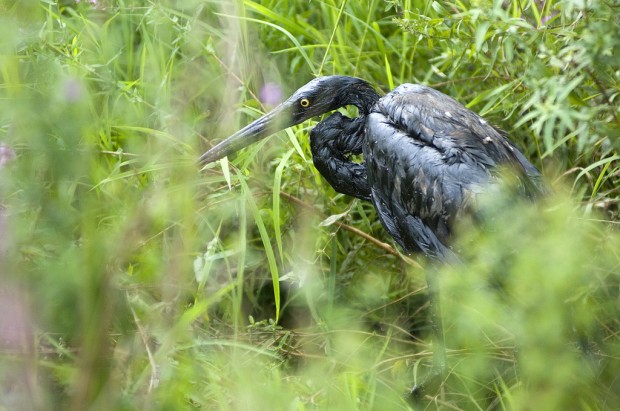We have much more to do and your continued support is needed now more than ever.
EPA Slams Keystone XL Review
The Environmental Protection Agency is taking its mandate seriously, if its new comments on the Keystone XL pipeline are any indication. In an official letter submitted Monday afternoon, EPA called the environmental review of the tar sands megaproject “insufficient” (in agency-speak that means “this doesn’t cut it”) and recommended major revisions to the State Department’s analysis, including greater consideration of oil spill risks, alternate routes, and threats to water resources like the Ogallala Aquifer. And in the biggest eye-opener of all, EPA challenged State’s assumption that tar sands will be developed regardless of the outcome for Keystone XL — which could fundamentally change the equation for how they weigh climate impacts.
Coming on Earth Day, it’s welcome news that the agency is trying to protect Americans and wildlife from a huge mistake.

This isn’t a new position for EPA — at several key points during the Keystone XL saga, officials have made it clear that their colleagues at the State Department need to go back to the drawing board. Partly, this is due to the fact that State isn’t used to leading big environmental studies; it’s only a quirk of the system that put them in charge of Keystone. But with a decision this important, with so much riding on a thorough analysis, we can’t afford growing pains.
Americans speak out
In addition to the environmental review, the government is also conducting something called a “National Interest Determination,” which will help decide whether or not Keystone is a good idea, based not just on environmental factors but also on things like diplomacy, energy security, and jobs (or lack thereof). Americans are already letting the White House know what they think: on Tuesday, a coalition of conservation groups, indigenous peoples, public health advocates and landowners along the pipeline route will deliver over a million comments from the public opposing construction of this risky project.
As NWF’s Jim Murphy put it in the Los Angeles Times:
“The Environmental Protection Agency’s letter shows that despite multiple tries, the State Department is incapable of doing a proper analysis of the climate, wildlife, clean water, safety and other impacts of this disastrous and unneeded project. President Obama has more than enough information to determine the Keystone XL tar sands pipeline is not in America’s national interest and he should reject it.”
President Obama gets to make the ultimate decision, but John Kerry (the U.S. Secretary of State) is a long-time champion against climate change, and could still sway his agency’s ultimate recognition. A million anti-Keystone comments, plus a timely assist from EPA, could tilt the balance in our favor.
![]() Your donations make a big difference in our efforts to protect wildlife from habitat loss and the effects of global warming.
Your donations make a big difference in our efforts to protect wildlife from habitat loss and the effects of global warming.
To learn more about Keystone XL and how you can help, visit NWF.org/tarsands





















